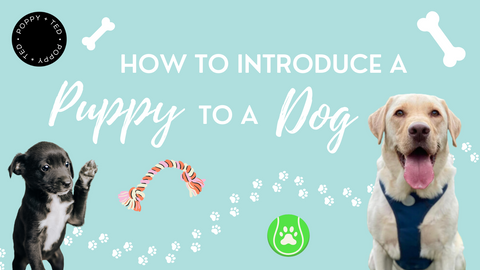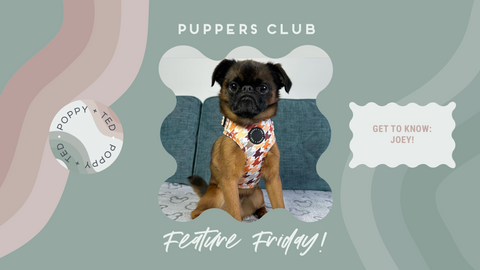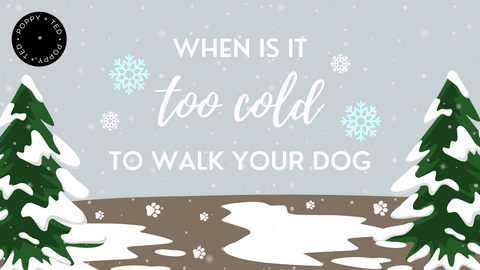Are you getting ready to welcome a new furry friend into the family?
If you are bringing a new puppy home to join the family but already have another dog, you might be dreaming of an instant connection or even puppy love. But that’s the best-case scenario. In reality, your dog is just like a little person, and having their space and attention invaded with no warning is bound to throw them off-kilter.
To help you introduce your dog to your new puppy, we have put together the ultimate guide for creating a positive first impression for an epic friendship.
Understanding Your Dogs: Personalities & Quirks
When it comes to introducing your dog to the new puppy in the family, it’s important that you have a grasp on their individual personalities. This will help you understand how they will react and interact with each other, as well as look out for any warning signs that they’re not totally getting along.
Understanding your dogs is key to ensuring a smooth introduction between your current furry pal and the adorable new addition to your family.
Getting to Know Your Current Dog
Everyone knows that a dog is man’s best friend, and you will know your bestie better than anyone. They’ve got their quirks, right? Understanding their temperament, whether they’re laid-back or super energetic, helps a lot in getting them settled with the new addition. Some dogs adore company, while others might need a bit more time to warm up. Knowing their preferences, like favourite toys or belly-rub spots, can be your secret weapon.
Keep an eye on their body language, too. Are they wagging their tail or giving a cautious sniff? It’s like deciphering their secret code. Knowing these signals helps anticipate how they might react to a new buddy.
Cracking the Code of the New Pup
Now, onto the new addition! Puppies are bundles of joy, but each comes with their own puppy package. Some might be full of beans, ready to play at the drop of a hat. Others might be a tad shy, taking time to find their paws in a new environment.
Understanding their needs is as crucial as it gets. Do they crave constant cuddles, or are they more independent? Are they easily excitable or prefer a calm environment? These little details set the stage for a successful introduction.
Remember, just like humans, dogs have their own unique personalities. It's this mix of quirks and charms that make them oh-so-lovable.
Preparing for Pre-Introduction
Once you’ve got a good idea of how the two dogs will interact with each other, you can begin preparing the pre-introduction. You can’t just put the furry friends in a room together and hope for the best.
Creating a Neutral Territory
Imagine this: a place where neither dog feels like it's their territory. That’s the perfect spot for their first introduction, you want it to feel more like a meet-cute rather than a blind date. Think neutral ground – a park or a friend’s yard where neither dog has staked a claim.
On leash, let them explore this neutral territory separately before the big meet. This helps them get comfortable with the new smells and surroundings. Plus, it eases any tension that might arise from feeling like an intruder in someone else’s space.
Separate Spaces and Resources
Just like siblings sharing a room, dogs need their own space too! Before their introduction, set up separate areas with their beds, toys, and feeding spots. This gives each pup a safe haven to retreat to if they need some ‘me time’.
Don’t forget to double up on resources as well. Two food bowls, two water bowls, and so on. This avoids any squabbles over who gets what. It’s like giving each of them their own special place at the dinner table.
Gradual Introduction Techniques: 6 Tips
When it’s time to get your dog and puppy acquainted, remember that patience is key. It’s going to be a big change for your faithful dog, and your puppy is likely still finding its paws in its new home. Here are X tips to get you gradually introduce your fur babies, so you will all be on your way to one big happy family soon enough.
1. Controlled Sniffing Sessions:
Start with controlled, short meetings in a neutral space. Allow both dogs to sniff each other while on leashes, keeping the interactions brief. This initial introduction helps them become familiar with each other's scents.
2. Parallel Walks:
Take both dogs for parallel walks, keeping a safe distance between them. This activity helps them get accustomed to each other’s presence without direct interaction, gradually building comfort.
3. Rotating Scents and Spaces:
Swap their bedding or toys occasionally, introducing each dog to the other's scent in their respective spaces. This familiarises them with each other's smells, fostering a sense of familiarity and comfort.
4. Positive Reinforcement:
Reward good behaviour with treats and praise during their interactions. Encourage positive interactions, such as calm behaviour or friendly gestures, to associate their time together with positive experiences.
5. Supervised Play Sessions:
Once they exhibit more relaxed behaviour around each other, introduce short and supervised play sessions. Keep these sessions light and positive, ensuring both dogs are comfortable and enjoying themselves.
6. Gradual Increase in Time Together:
Slowly increase the duration of their time together under supervision. Monitor their interactions closely and be ready to intervene if tensions arise, ensuring safety and a positive environment.
Managing Stress & Building a Paw-sitive Relationship
Recognising signs of stress is crucial during the introduction phase, and fostering a positive relationship between your dogs is equally important. By recognising these signs and managing them effectively, you create an environment conducive to building a positive relationship. Remember, a harmonious relationship between your furry friends develops over time with consistent effort and understanding.
Recognising Signs of Stress:
- Body Language: Watch for signs like tucked tails, raised hackles, or stiff posture. These can indicate discomfort or stress.
- Vocalisation: Whining, barking, or growling might signal unease or tension between the dogs.
- Avoidance or Aggression: If one dog actively avoids the other or displays aggression (snapping, biting), it's essential to intervene and separate them immediately.
Managing Stressful Situations:
- Stay Calm: Your dogs pick up on your emotions. Stay calm and composed to reassure them.
- Redirect Attention: If tensions rise, redirect their focus by introducing a toy or offering treats to distract them positively.
- Separation if Necessary: If conflicts persist, separate the dogs and give them time apart to relax before attempting another introduction.
Building a Positive Relationship:
- Encourage Positive Interactions: Reward moments of calmness, curiosity, or friendly behaviour between them with treats or praise.
- Shared Activities: Engage them in shared activities like walks, training sessions, or playtime. These shared experiences can foster camaraderie.
- Respect Individual Spaces: Ensure both dogs have their own space, respect their boundaries, and avoid favouritism.
Gear Up for Puppy Bliss: Essential Supplies for a Seamless Introduction
As you embark on this delightful journey of introducing a new puppy to your family, ensuring you have the right supplies is key to their comfort and happiness. Stock up on essential puppy gear like harnesses, dog bowls and cosy beds to give your pups their own space. Plus, don’t forget you can shop convenient split leads that make walking both dogs a breeze.
Shop our wide range of high-quality puppy supplies at Poppy + Ted that cater to every need, ensuring your furry friends have everything they need to become two peas in a pod.
Related Articles
Is Two Better Than One? Deciding To Get A Second Dog



